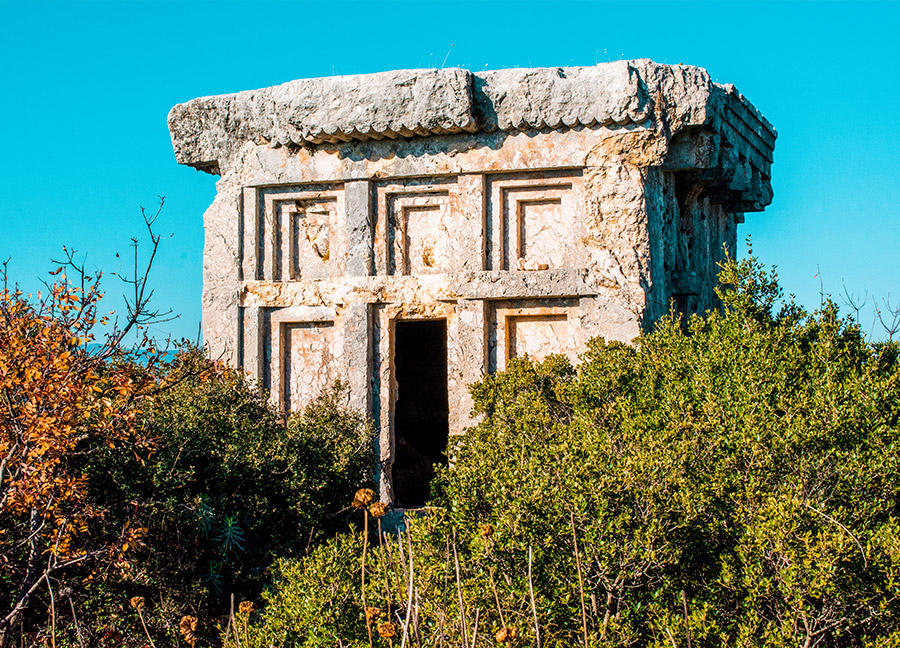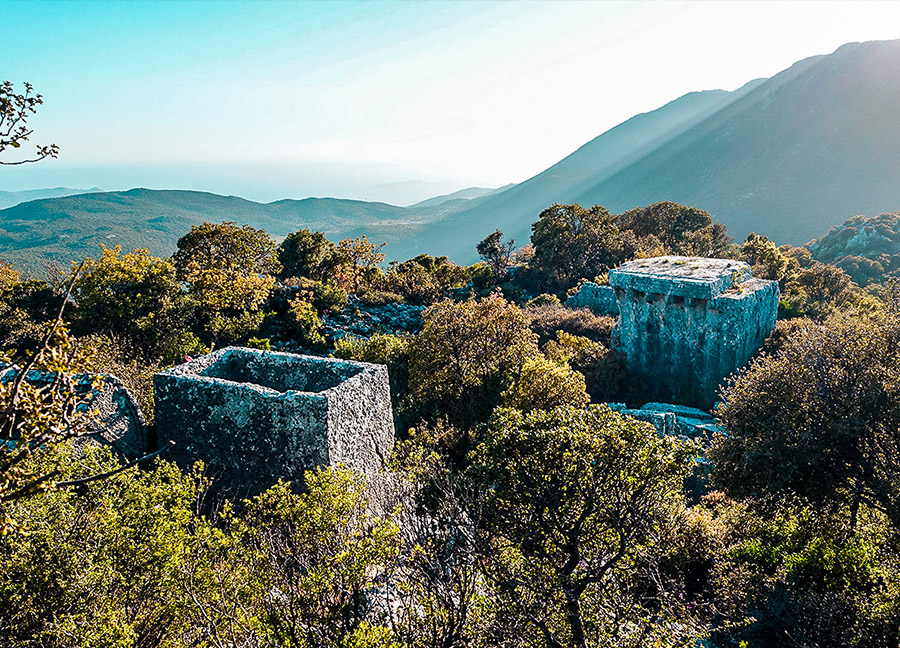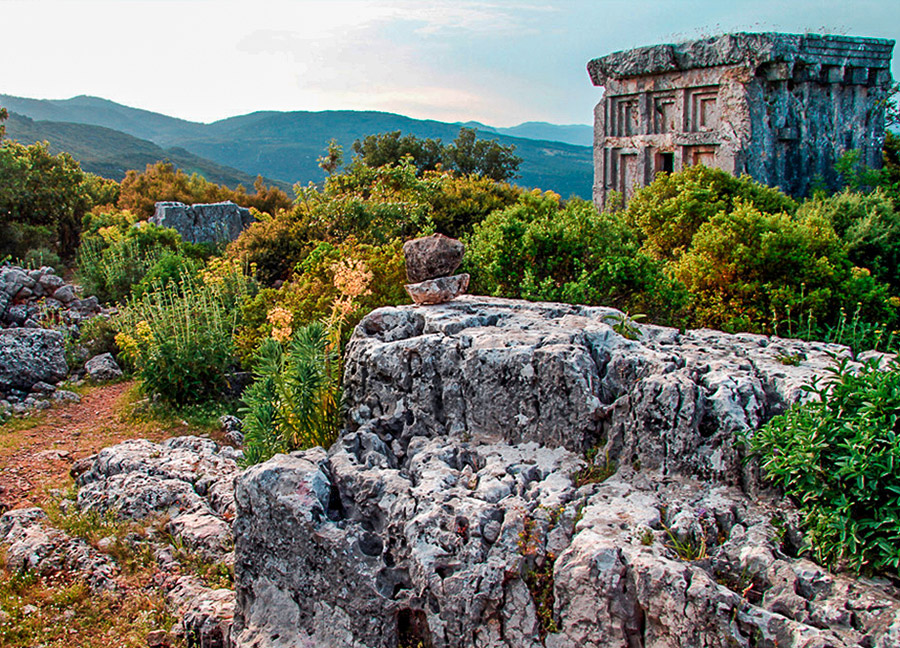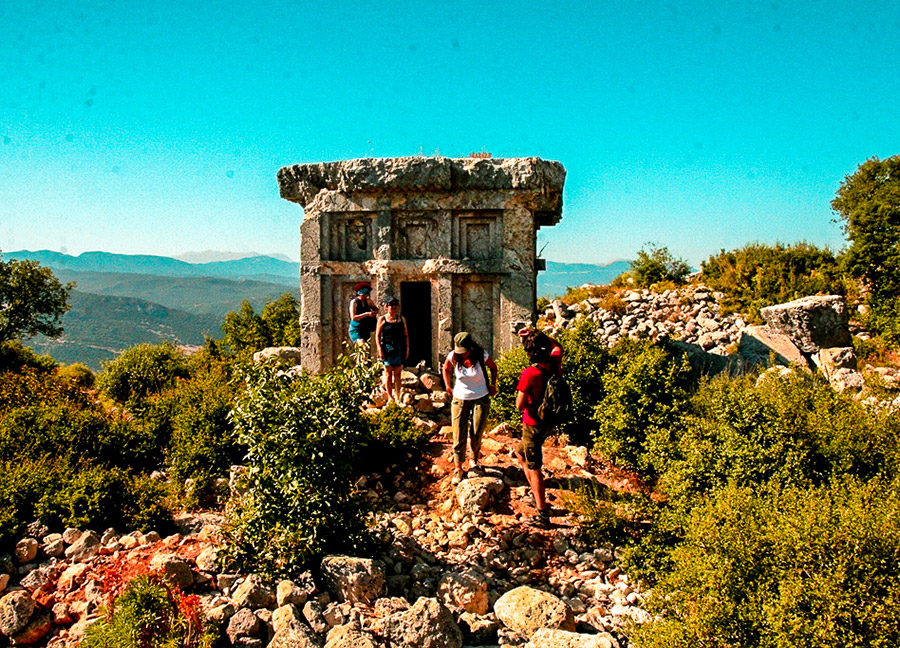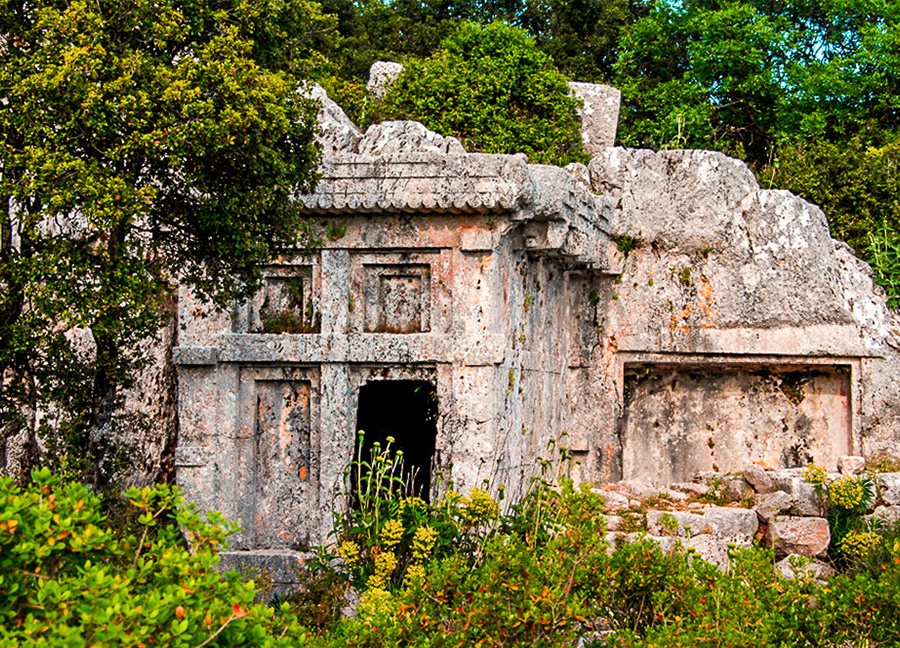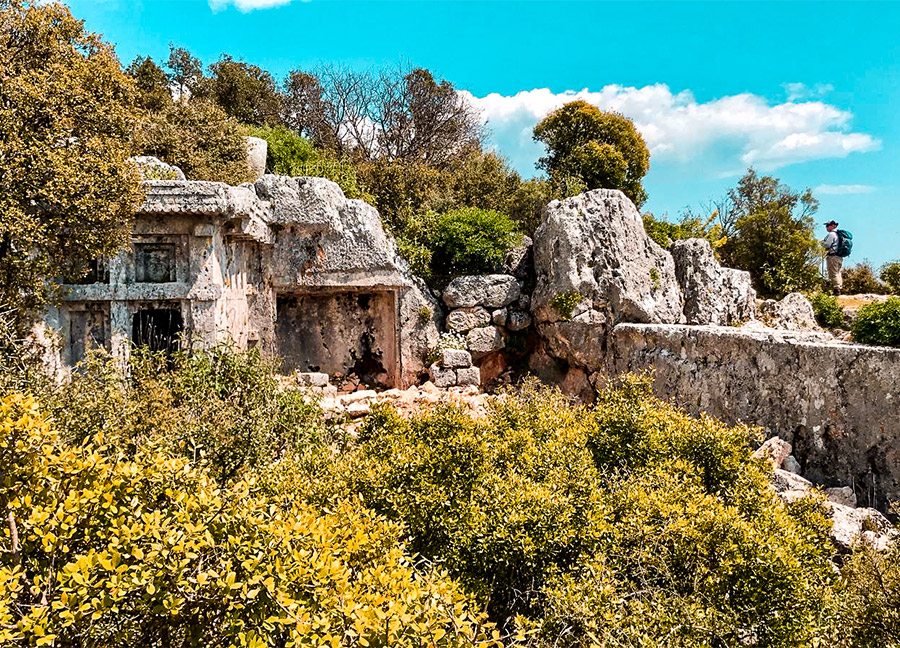The Ancient City of Phellos is in the Kaş district. It was founded in the 4th century BC, in the northeast of Antiphellos, at an altitude of 950 meters above sea level, in the Fellen - Yayla region.
Phellos, together with Antiphellos, is one of the few Lycian cities with a Greek name. The settlement of Phellos, which means 'Stone Country', is on a ridge that dominates the surrounding mountainous region and where enemies can be easily seen.
The ancient city of Phellos was in an important position when it was founded. It lost its former power in the Hellenistic Period with the development of the port city Antiphellos, which it founded. There is not much information about its historical past. The city is more of a defense city than a large settlement.
It is impossible to find many finds in the ancient city of Phellos, except for the city wall surrounding the acropolis, where the polygonal technique is seen from time to time. It spreads over approximately 550 meters long and 200 meters wide. The acropolis was built from limestone blocks, which is the natural formation of the region and is surrounded by walls. The towers adjacent to the east and south walls are of rectagonal technique. The family tomb on the western edge of the acropolis is one of the most original examples that reflect the wooden house architecture of the Lycian Period on the rock. Among the sarcophagi found in the valley to the north of the acropolis and on the slopes of the hill opposite, the one with relief, consisting of three parts, a pedestal, a sarcophagus and a lid, is among the most interesting finds. On one side of the sarcophagus, the tomb owner is depicted. On the other side, there are warrior and bird figures and reliefs.
The ancient city of Phellos carries traces from the Lycian, Hellenistic and Byzantine Periods, and attracts history buffs with its multi-layered structure. We recommend that you add the ancient city impresses with its panoramic view that puts the whole environment under your feet to your itinerary during your visit to Kaş.


